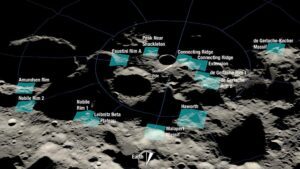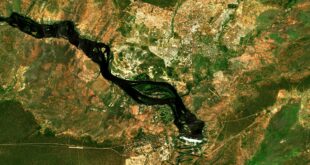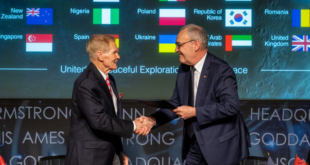
Edinburgh, 22 August 2022. – NASA has identified 13 candidate landing regions, each containing multiple potential landing sites for the upcoming 6.5-day Artemis III mission, within six degrees of latitude of the lunar South Pole, the Agency said. Artemis III will be the first mission to land astronauts on the lunar surface, including the first woman to visit the Moon.
The candidate lunar landing regions are Faustini Rim A, Peak Near Shackleton, Connecting Ridge, Connecting Ridge Extension, de Gerlache Rim 1, de Gerlache Rim 2, de Gerlache-Kocher Massif, Haworth, Malapert Massif, Leibnitz Beta Plateau, Nobile Rim 1, Nobile Rim 2, and Amundsen Rim.
These regions contain diverse geologic features and provide landing options for all potential Artemis III launch scenarios. The landing sites are strongly tied to the timing of the potential launch windows.
To select the 13 regions, a team of scientists and engineers assessed data from NASA’s Lunar Reconnaissance Orbiter. They also used decades of publications and science findings in connection with the Moon. The possibility of safe landing was a priority in choosing these regions, including terrain slope, lighting conditions, and ease of communications with Earth.
The lunar South Pole is scientifically significant as it contains permanently shadowed regions rich in resources. The Artemis III crew is due to conduct a moonwalk, collect samples and scientifically analyze the depth, distribution, and composition of water ice found there.
 SpaceWatch.Global An independent perspective on space
SpaceWatch.Global An independent perspective on space




